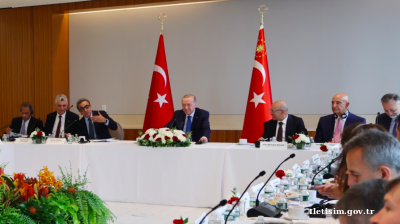Polish inflation is set to continue to rise in the coming months, approaching 7% by December 2021. We see average CPI in 2021 at 4.75% year on year and at 4.5% y/y in 2022. It is quite likely that the NBP may under-deliver with tightening vs elevated market expectations, which should send PLN weaker.
According to the flash estimate, the CPI in September rose to 5.8% y/y from 5.5% in August (consensus at 5.5-5.6% y/y, ING 5.6% y/y). The strong price pressure in Poland is due to the continued high pace of fuel price rises (28.6% y/y) and further increases in food prices (to 4.4% from 3.9% in August). Energy prices were up 7.2%, and should accelerate further due to the already announced natural gas price hike, starting from October.
Besides supply-regulatory factors, persistently high core inflation contributes to the high headline as well. We estimate that the core rose to 4.1% y/y from 3.9% in August. We do not know the details yet; the CSO will publish them mid-month. In our view, prices of goods continued to rise as producers passed rising costs on to consumers amid sustained demand. Prices of services are also likely to have remained high. Rising wages are driving up costs, while households are keen to use services following the relaxation of sanitary restrictions.
In our opinion, inflation in Poland should continue to rise, and by the end of the year it could be close to 7%, having averaged 4.75% y/y in 2020. We expect it to average 4.5% next year, 1pp higher than the MPC's upper bound for deviations above the inflation target.
The excessive and persistently high inflation in Poland polarises opinions in the MPC. The minutes from the last MPC meeting showed that in September there was a proposal (without achieving a majority) to raise the reference rate from 0.1% to 2%. The MPC majority continues to indicate that monetary policy changes will be justified if: (1) uncertainty regarding the pandemic and its impact on the economy decreases, (2) forecasts point to the continuation of a favourable economic conditions, (3) there is a risk of inflation rising above the NBP inflation target in the coming years. In this context, November's NBP inflation projection may be important, as it should show an even higher inflation path than in July (that projection was already edging towards 3.5%), with GDP growth projected above the potential.
The market is pricing in a +40bp rate hike this year. We see a risk that the hike may under-deliver vs market expectations, or that the hike would be lower or even postponed to 2022. The fourth wave of the pandemic in Poland is ongoing and its peak may come around the November MPC meeting. Moreover, the balance of payments is deteriorating. After a data revision for 2Q21, the current account surplus fell from nearly 3% of GDP in December 2020 to about 0.8% of GDP in 3Q21.
The Council has repeatedly stressed the importance of the zloty exchange rate for GDP growth. The MPC may interpret the decrease in the current account surplus as a threat to GDP growth rather than the second red light (after record-high inflation) signalling an overheating of the economy.
Should this reduce the propensity to tighten monetary policy, a weakening of the zloty in November is possible. Admittedly, the zloty gained on Friday, as foreign investors believe that the proposal (rejected) of a 190bp rate hike at the September MPC meeting means that the NBP will follow the Czech CNB (which raised rates by 0.75pp yesterday). In our view, however, there could be a disappointment – MPC can under-deliver, with the scale of tightening (we see a hike by about 15bp).
The low scale of NBP tightening in November (October hike out of discussion) may push the €/PLN rate to 4.80 in late 2021. This would only add to inflationary pressure domestically, especially in the context of supply constraints for exporters and high inflation in trading partners: in September, inflation in Germany jumped to 4.1% y/y, its highest in 30 years.
Rafal Benecki is a chief economist at ING in Poland. This note first appeared on ING’s THINK.ING portal here.
Content Disclaimer: This publication has been prepared by ING solely for information purposes irrespective of a particular user's means, financial situation or investment objectives. The information does not constitute an investment recommendation, and nor is it investment, legal or tax advice or an offer or solicitation to purchase or sell any financial instrument. Read more
Opinion

Don’t be fooled, Northern Cyprus’ new president is no opponent of Erdogan, says academic
Turkey’s powers-that-be said to have anticipated that Tufan Erhurman will pose no major threat.

COMMENT: Hungary’s investment slump shows signs of bottoming, but EU tensions still cast a long shadow
Hungary’s economy has fallen behind its Central European peers in recent years, and the root of this underperformance lies in a sharp and protracted collapse in investment. But a possible change of government next year could change things.

IMF: Global economic outlook shows modest change amid policy shifts and complex forces
Dialing down uncertainty, reducing vulnerabilities, and investing in innovation can help deliver durable economic gains.

COMMENT: China’s new export controls are narrower than first appears
A closer inspection suggests that the scope of China’s new controls on rare earths is narrower than many had initially feared. But they still give officials plenty of leverage over global supply chains, according to Capital Economics.




